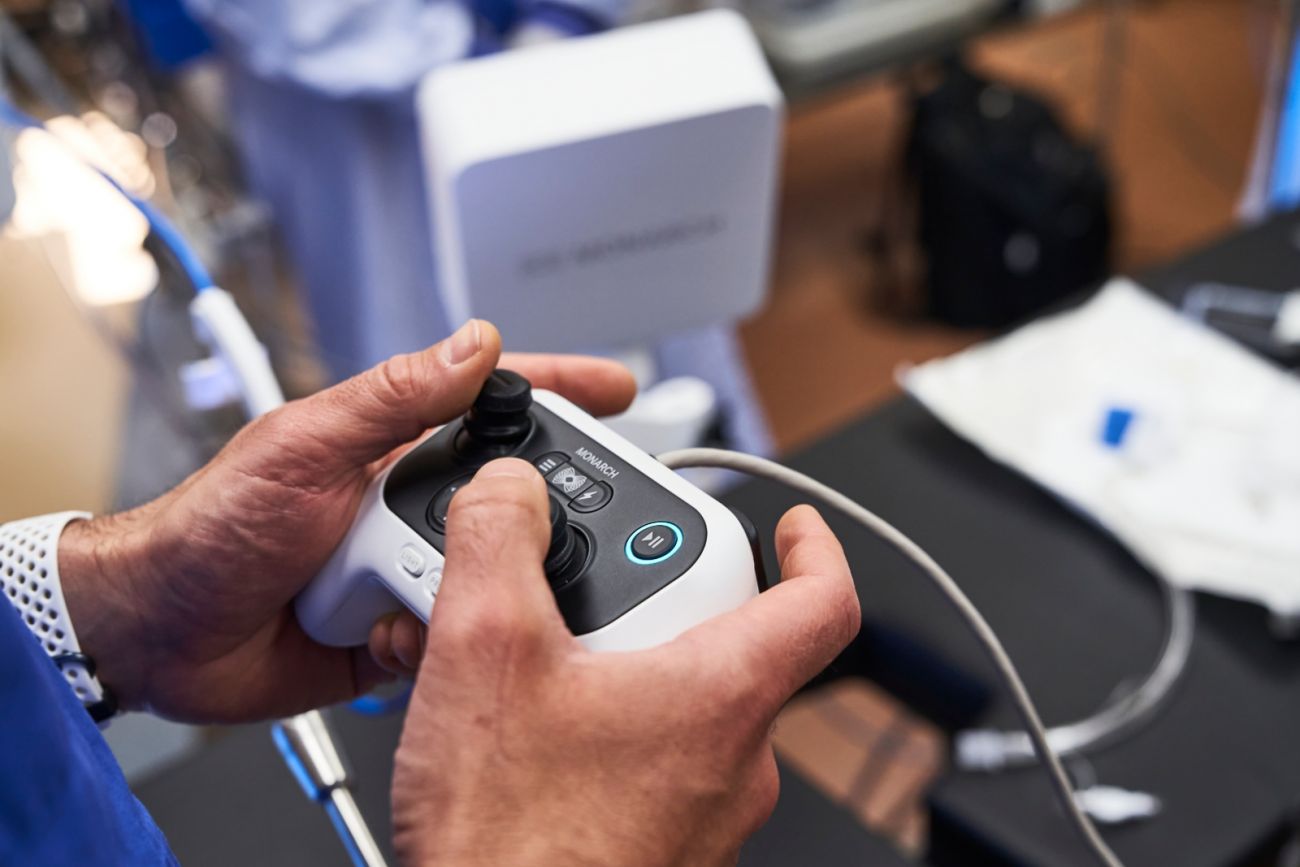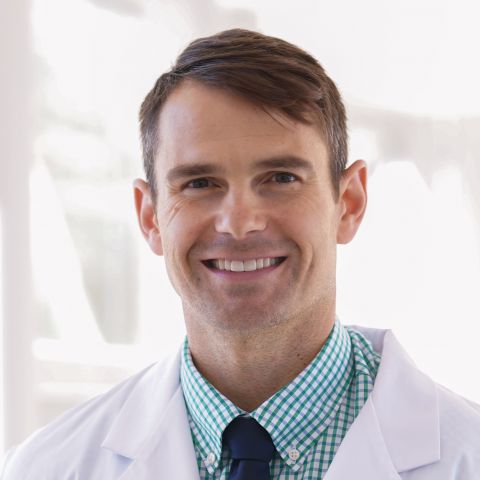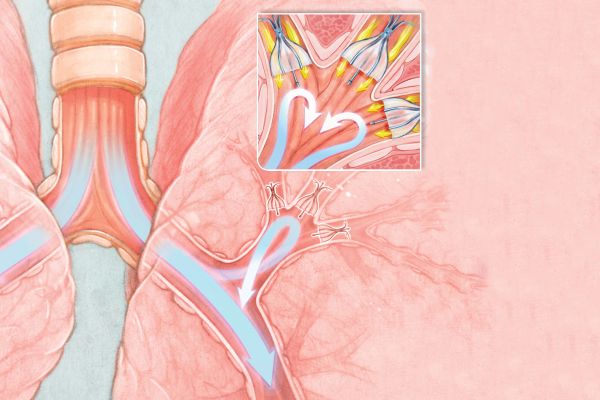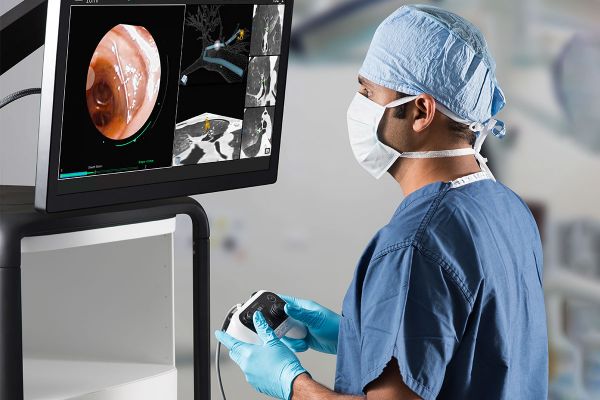Monarch helps doctors catch lung cancer in early stages
You can thank a community swimming pool for helping Patricia discover her lung cancer before it advanced.
Having beaten both breast and uterine cancer, Patricia already was more educated about cancer than anyone wants to be. So when she found out in 2017 that she had a small mass in her lung that needed to be watched — what’s called a "ground glass opacity" — she knew she had to be vigilant. One day in 2020, she was swimming at the YWCA in Elmira, New York, when a friend told her she’d been diagnosed with the same kind of mass. Patricia took that as a sign and called her primary doctor right away.
Tests showed that it hadn’t grown in size but had in density. Its sneaky progression had begun. The specialist she saw in Elmira sent her immediately to Roswell Park to benefit from a brand-new technology — so new that no other patient in New York State had experienced it yet.
The Monarch robot
Patricia was about to meet the Monarch Platform, a cutting-edge form of robotic bronchoscopy that helps doctors discover and diagnose lung cancer in its earliest stages.
Roswell Park was able to install the system last summer and offer it to patients, thanks to generous donations from supporters. A $600,000 allocation from the Roswell Park Alliance Foundation covered the cost of the new system as well as some of the associated costs to get things started, including training for Roswell Park staff.
“This will be game-changing,” says Sai Yendamuri, MD, Chair of Thoracic Surgery at Roswell Park and a key motivator in bringing the Monarch to Buffalo. “Lung cancer is the number-one cancer killer in the world, making up almost 25% of all cancer deaths. That’s more than colon, prostate and breast cancer combined. Catching it in early stages is both difficult and critical to survival.”
“The goal is for a stage shift in diagnosis,” says Nathaniel Ivanick, MD, interventional pulmonologist in the Department of Thoracic Surgery and the doctor who performed Patricia’s Monarch procedure. “Most lung cancer is diagnosed in late stages. We’re trying to get lung nodules that represent very early-stage cancers, because if we can identify them then, removing them surgically is possible. That has far and away the best chance of cure.
“If we could flip diagnosis from 77% at late stages to 77% at stage 1, where surgical resection or radiation therapy is our number-one option, I think that would result in a lot of life years saved and overall fewer complications from chemotherapy and other current treatments for more advanced stages of cancer.”
How it works
The Monarch Platform combines the latest in robotics, computer navigation and 3D imaging, providing superior vision, control and precision. Using a controller to guide the bronchoscope into the patient’s airway, an interventional pulmonologist like Dr. Ivanick sees on one screen the area targeted for biopsy, the real-time location of the bronchoscope and the pathway to the target.
On a second screen, a magnified 3D image shows what the camera is seeing as it travels through the lungs and their passageways. If the camera reveals any areas of concern along the way, the Monarch can biopsy them during the procedure.
“The Monarch has been fantastic,” says Dr. Ivanick. “Previously, the other navigational platforms we had to work with did a good job in showing the direction to a spot. But the Monarch far exceeds them. I’m getting biopsies that give diagnostic information in cases where they weren’t able to get that information.
“Patricia had a smallish lung nodule in her right upper lobe, in a position that was historically tricky for anyone to get to. A CT-guided needle biopsy, for instance, would have had to pass through a lot of normal lung tissue, and that is associated with increased risk of bleeding as well as complications like lung collapse. Already I’ve had a number of cases where my chances of getting to a nodule with any other sort of platform would be really, really low. And we’ve gotten it with the Monarch.”
Patricia’s experience
“I was excited to be the first, to be able to help other people in the future,” Patricia says. “I said, ‘God gives us opportunities, and it’s up to us to make the decision to use them or forget about them,’ and this was important. Like my other cancers, I said, ‘Pay attention to your body.’
“I even got to meet the Monarch. In fact, they could show me on their viewers everything they were going to do.” Afterward, “I knew before I left that day that it was for sure cancerous.”
Five radiation treatments later, Patricia feels great. The 78-year-old spends lots of time with her family, from her husband on down to their great-grandchildren. She loves gardening, coordinating blood drives — she used to be a Red Cross LPN — and, of course, swimming at the YWCA.
To the donors who made bringing the Monarch to Roswell Park possible, she says: “Thank you, thank you. It’s amazing that you’re giving so that people can have this lifesaving machine.”




